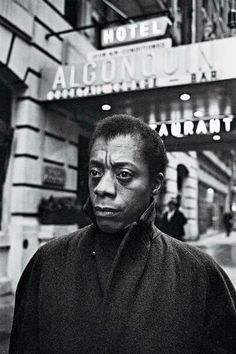Class discussion on Wednesday made me think more about how Baldwin uses speech, voice, and silence in Go Tell It On the Mountain. David pointed out how Baldwin plays with changing voice in Florence’s chapter in particular, and I think that this aspect of the novel is a unique way in which Baldwin draws on the Christian religious tradition: although he is critical of Christianity in many regards, he also seems to participate in the prophetic tradition of the scriptures by foregrounding voices that are silenced elsewhere.
With the Lucan references, James Baldwin both contributes to and subverts the Christian tradition. In particular, Baldwin’s use of speech and silence critiques the religious environment he grew up in, while hinting at a more liberative vision of Christianity. Baldwin invites us to attend to different voices than those we normally hear, and to pay closer attention to the silences that persist in our communities and in ourselves.
In a feminist & multicultural theologies class that I took, we discussed liberative readings of scriptural texts that have historically been used to oppress. Although Christian scripture and teaching have often been used negatively against BIPOC, female, and queer people (among others), that’s counter to God’s will. Noticing whose voices are (un)heard is a significant part of the work of reclaiming scripture, and I think Go Tell It On the Mountain has this project in common with liberation theologies’ work of retrieval and reclaiming.
Revisiting the beginning of the Gospel of Luke which we read on Wednesday, I’m struck by Zechariah. His is the voice we would expect to hear in a religious tradition dominated by male voices, but Luke’s Gospel surprises us by letting us hear the voices of women. Likewise, Baldwin’s work “surprises” by disrupting the norms of whose perspectives we see. For instance, although there is much that John cannot say (p. 16), Baldwin makes sure that John’s perspective is the voice we hear. Because of his family relationships, race, and sexuality—not to mention his doubt, for which Zechariah was silenced by Gabriel—there are multiple silences imposed on John. Similarly, there are limits to what Florence can say aloud, but by writing a chapter from her perspective, Baldwin gives her more of a voice in the novel.
Baldwin is mindful of ensuring that there are multiple voices participating in Go Tell It On the Mountain, taking a new approach to the religious influences we see—and using his own voice in a new way in this debut novel. Even if John is not able to speak in his home or church, in Baldwin’s novel, he is able to break his silence. The same goes for Baldwin—in the act of writing this novel, he shatters the silences in his own life.
